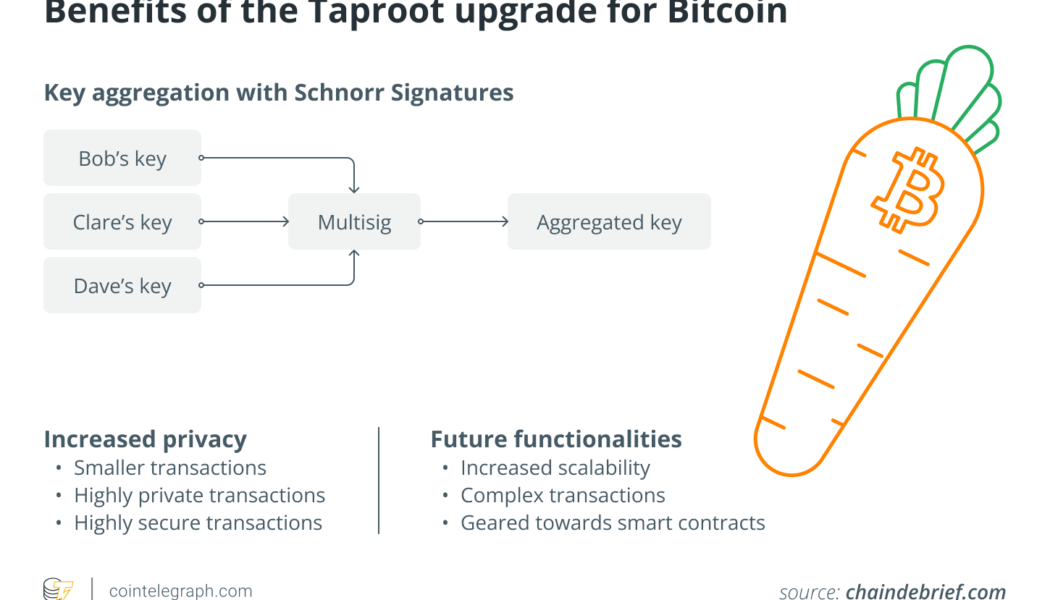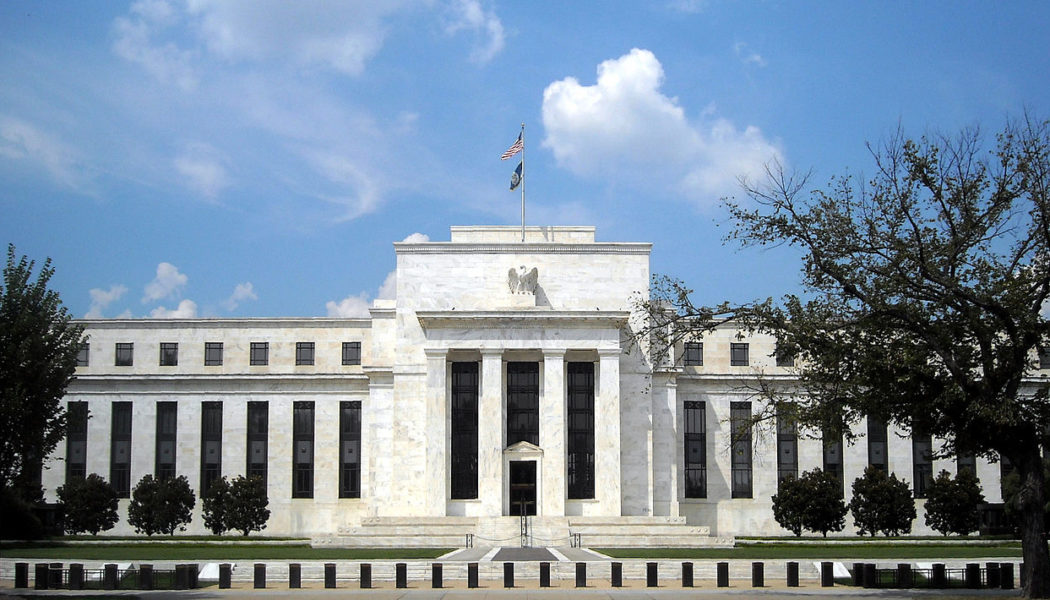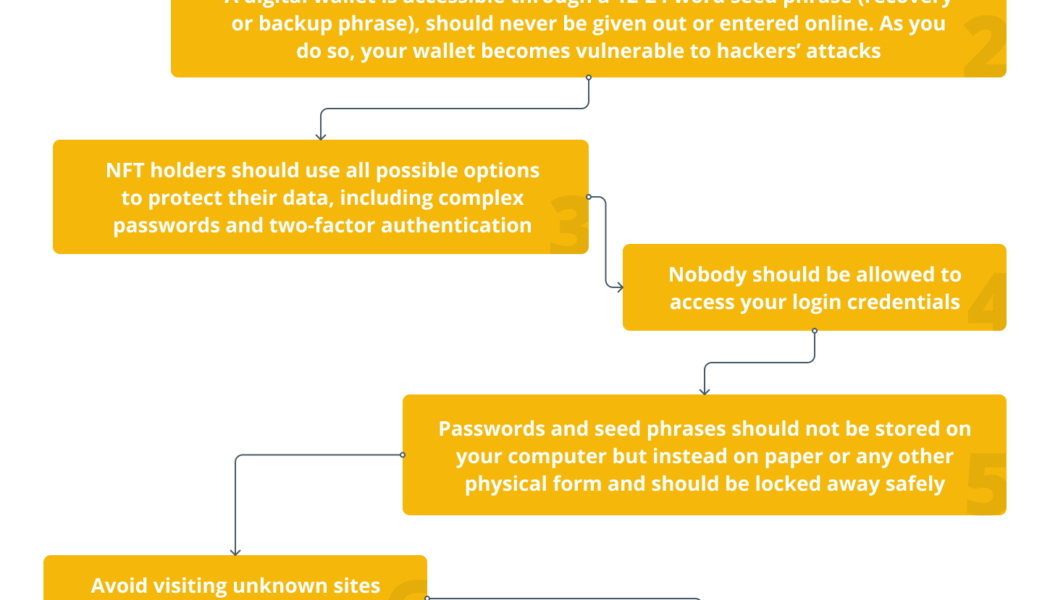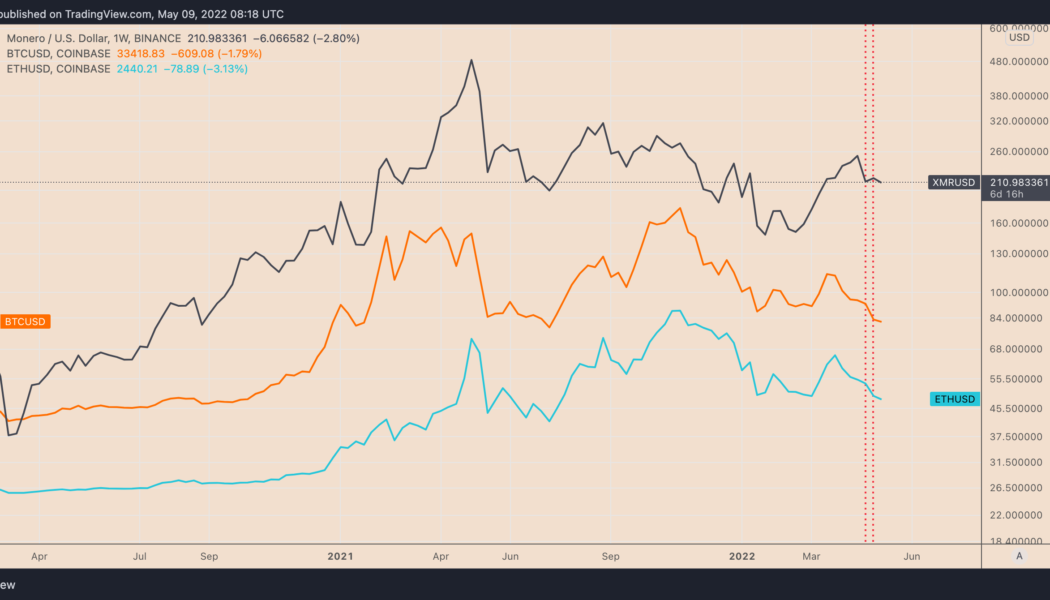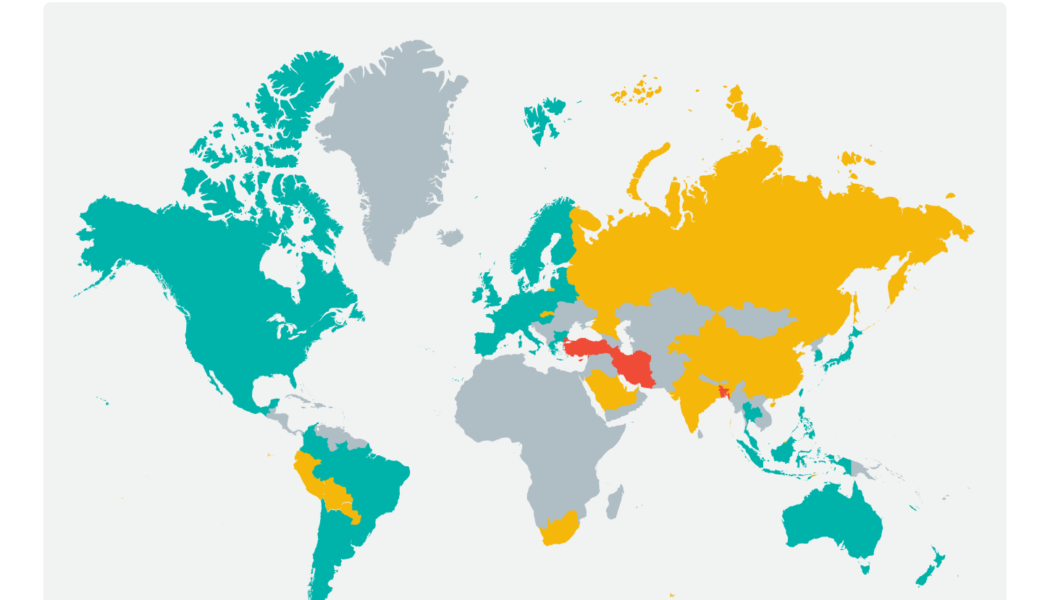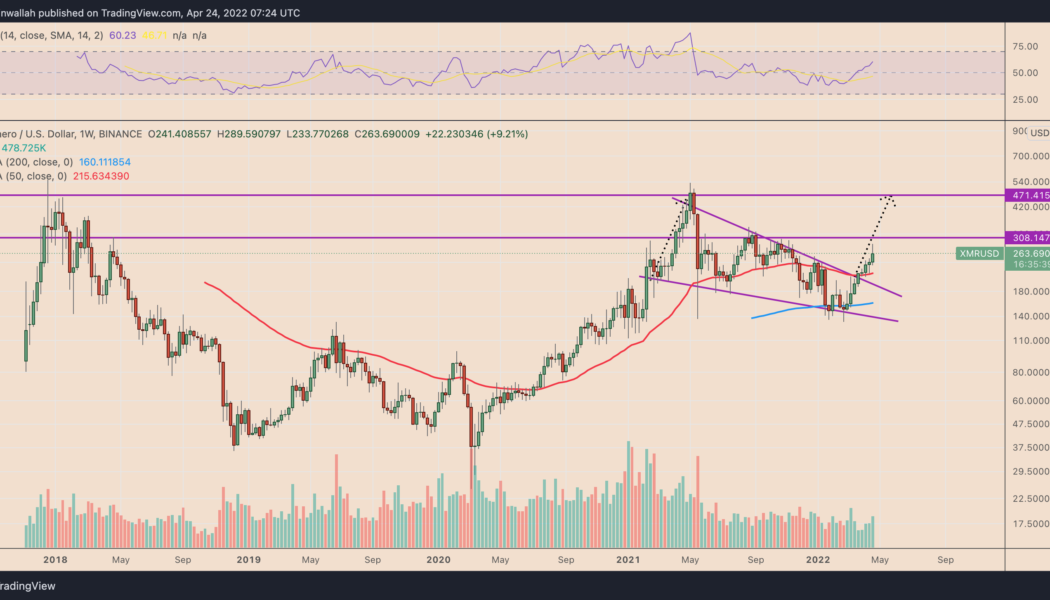Privacy
What is a seed phrase and why is it important?
A seed phrase might be confusing and probably you might be wondering how a seed phrase looks and maybe how it is created. The seed phrase is generated by a cryptocurrency wallet and the user has no way of customizing it. The words generated are derived from a list of 2048 words. So, how many words is a seed phrase? A seed phrase is made up of a long string consisting of a group of random words. The words on a seed phrase are simplified so that the user can remember them, unlike if the seed phrase consisted of long numbers or special characters. The recovery phrase consists of 12 to 24 words like energy, road or open. To avoid errors, these randomly generated words do not include pairs like “man” and “men” in the same seed phrase. Bitcoin im...
Vitalik Buterin proposes stealth addresses for anonymous NFT ownership
Ethereum co-founder Vitalik Buterin has suggested there may be a “low-tech approach” to incorporating privacy features ito nonfungible token, or NFT, transactions. In a Monday post on the Ethereum research channel, Buterin implied Merkle trees and Zero-Knowledge Succinct Non-Interactive Arguments of Knowledge, or ZK-SNARKs, were a more complicated method for stealth addresses for ERC-721 tokens, while proposing his own solution. The Ethereum co-founder suggested instead that smart contract wallets could include a method that would allow the sender to essentially mask their address to third parties. “You would be able to eg. send an NFT to vitalik.eth without anyone except me (the new owner) being able to see who the new owner is,” said Buterin. Idea: stealth addresses for ERC721s. A low-te...
Regulations and exchange delistings put future of private cryptocurrencies in doubt
The core principles of cryptocurrency were based on financial independence, decentralization and anonymity. With regulations being the key to mass adoption, however, the privacy aspect of the crypto market seems to be in jeopardy. In 2022, even though no particular country has come up with a universal regulatory outline that governs the whole crypto market, most countries have introduced some form of legislation to govern a few aspects of the crypto market such as trading and financial services. While different countries have set different rules and regulations in accordance with their existing financial laws, a common theme has been the strict implementation of Know Your Customer (KYC) and Anti-Money Laundering (AML) regulations. A majority of crypto exchanges operating with a license obt...
The crypto industry must do more to promote encryption, says Meltem Demirors
“I like to call myself a future, or aspiring, cult leader,” Meltem Demirors, chief strategy officer of CoinShares — a publicly listed investment firm managing around $5 billion in assets — told Cointelegraph. Demirors, who first entered the Bitcoin (BTC) space in late 2012, further mentioned that it has been “fun to see how big the crypto sector has become,” noting that people from all walks of life are now interested in the cryptocurrency space. As such, Demirors explained that “crypto cults” are bringing people together in a positive manner, especially since it gives people a sense of purpose and belonging. When it comes to regulations — one of the most important topics facing the crypto industry today — Demirors expressed skepticism. “Having been in this industry professiona...
Crypto privacy is in greater jeopardy than ever before — here’s why
Despite the latest technology, the world has yet to crack the code for privacy and security online. But that isn’t the only big problem we need to worry about. Hackers and robbers are tricking innocent users into giving up their private information as society becomes increasingly digital — and virtual currencies have a role in all of this. Cryptocurrencies smashed records in 2022, with the market topping $2 trillion for the first time ever. And while this has been greeted with excitement by current investors, it’s made others more wary. Why? Because as the asset class grows, it becomes more appealing to malicious actors. And for evidence of this, you only need to look at the growing number of users being targets of cryptocurrency robberies. The big question is this: if these cr...
US central bank digital currency commenters divided on benefits, unified in confusion
In January, the United States Federal Reserve Board of Governors released a discussion paper on a potential U.S. central bank digital currency (CBDC) titled “Money and Payments: The U.S. Dollar in the Age of Digital Transformation.” The comment period for the paper ended May 20, with the Fed receiving over 2,000 pages of comments from individuals alongside responses from leading stakeholders. Cointelegraph read a selection of shareholder responses to the Fed paper, and it quickly became apparent that there are plenty of confidently stated opinions but little agreement among them. The main points of commonality are in the places they are all perplexed. The Fed wants to know Appropriately for its purpose, the Fed paper provides a broad overview of central bank digital currencies and CBDC-adj...
Identity and the Metaverse: Decentralized control
“The Metaverse” and “Web3” are the buzzwords of the moment, with their concepts permeating across the worlds of fintech, blockchain, and now even mainstream media. With decentralization thought to be at the core of the Web3 Metaverse, the promise of a better user experience, security and control for consumers is what’s driving its growth. But with users’ identities at the heart of the Metaverse, coupled with unprecedented amounts of data online, there are concerns over data security, privacy and interoperability. This has the potential to hinder the development of the Metaverse, but both regulated and self-sovereign identities could play an important role in ensuring that we truly own our identity and data within this new space. Related: Digital sovereignty: Reclaiming your private data in...
Why decentralized messaging apps will replace today’s social media platforms
The Russian government has cracked down on foreign social media platforms such as Instagram, Facebook and Twitter, banning them for extremist activists. For protestors, activists and local civilians, these actions have resulted in a significant barrier to communication with the outside world. Furthermore, they have also raised the question of just how easy of a target these apps are for state authorities. With citizens unable to access these platforms, they have little choice but to flee to the next-best still active platforms. However, it isn’t just Russian activists who have taken to alternatives. Consider, for example, Telegram, a cloud-based instant messaging service that has quickly become a place for sharing war footage and other content that may have otherwise been blocked on ...
On-chain privacy is key to the wider mass adoption of crypto
Innovations in the crypto space appear daily. Whether through decentralized applications or new ways to implement and use nonfungible tokens (NFTs) within decentralized finance, blockchain technology is innovating at the speed of light. The only thing missing? Widespread adoption. One thing holding this back is the very public nature of the blockchain. DeFi, as it operates now, lacks meaningful privacy. In order to catalyze broad adoption for businesses, governments and individuals, those executing blockchain transactions should expect regular, consistent privacy. First, we need to define what privacy means. It does not mean pseudonymity, which cryptocurrency purports to have now. Meaningful privacy means that a personal financial account will not be traced and an individual’s wealth will ...
Monero avoids crypto market rout, but XMR price still risks 20% drop by June
Monero (XMR) has shown a surprising resilience against the United States Federal Reserve’s hawkish policies that pushed the prices of most of its crypto rivals — including the top dog Bitcoin (BTC) — lower last week. XMR price closed the previous week 2.37% higher at $217, data from Binance shows. In comparison, BTC, which typically influences the broader crypto market, finished the week down 11.55%. The second-largest crypto, Ether (ETH), also plunged 11% in the same period. XMR/USD vs. BTC/USD vs. ETH/USD weekly price chart. Source: TradingView While the crypto market wiped off $163.25 billion from its valuation last week, down nearly 9%, Monero’s market cap increased by $87.7 million, suggesting that many traders decided to seek safety in this privacy-focused coin. XMR near ...
Solving the ‘Sunrise Issue’ is the key to unlocking crypto mass adoption
We have all been there. You see something, hear something, or feel something, and want to share that feeling or observation with someone else. Do you pick up the phone? Send over a text? Record a voice note? Humans thrive in our shared experiences: a captivating concert, the winning goal of a sports match, waking up to watch the sunrise. There’s something fulfilling about having an experience and being able to share it with someone in real time. And due to technology, we can do that, even if another person, call them our counterpart, is halfway across the world. So why wouldn’t we expect the same level of seamless communication and collaboration across an industry built around that very idea — total interconnectivity and a global reach? Crypto was built to democratize access to...
Monero ‘falling wedge’ breakout positions XMR price for 75% rally
Monero (XMR) price dropped by nearly 10% three days after establishing a week-to-date high around $290 on April 24. Nonetheless, several technical indicators suggest that the XMR/USD pair is poised to resume its uptrend over the next few months. Falling wedge breakout underway Notably, XMR’s price broke out of its “falling wedge” structure in late March. It continued its move upside in the later daily sessions, with rising volumes indicating bullish sentiment among Monero traders. Traditional analysts consider falling wedges as bullish reversal patterns, i.e., the price first consolidates within a contracting, descending channel, followed by a strong bounce to the upside. As a rule, the falling wedge’s breakout target comes to be near the level at length equal to th...








